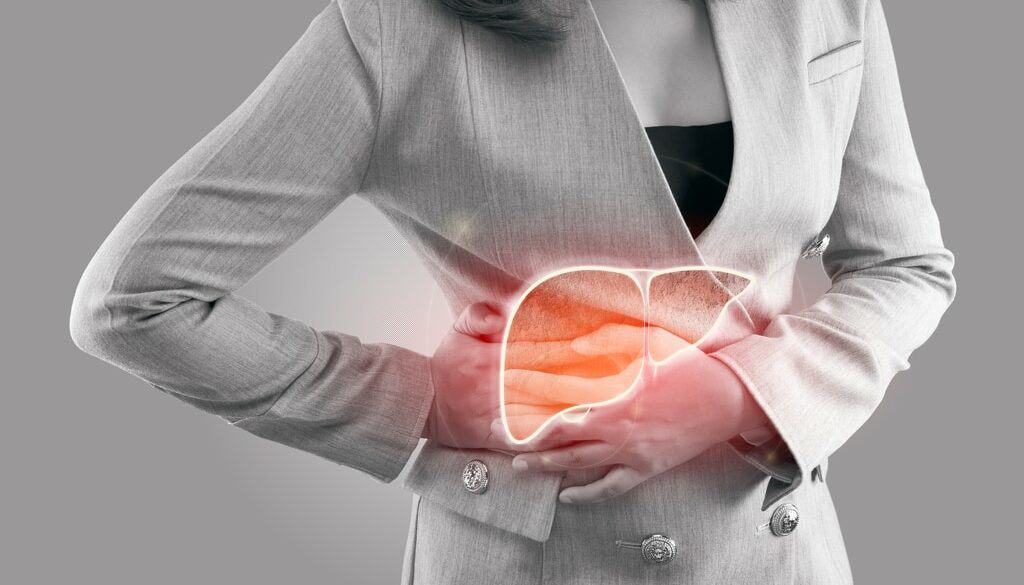Dr Dimitrios Karagiannakis, a specialist pathologist, hepatologist, and director of the 3rd Pathology Clinic at the Metropolitan General Hospital, explains the causes of liver cirrhosis and the disease's symptoms and complications.
Liver cirrhosis is the final stage of various liver diseases that cause chronic liver inflammation.
The most common causes are chronic viral hepatitis (chronic hepatitis B and C), chronic alcohol consumption, cholestatic diseases, autoimmune liver diseases, as well as metabolic diseases such as non-alcoholic fatty liver infiltration due to obesity, poor diet, diabetes mellitus, hyperlipidemia, and more.
Causes of liver cirrhosis
The most frequent cause of liver cirrhosis in Eastern countries is chronic hepatitis B, while in the Western world, it is Metabolic-associated Fatty Liver Disease.
The end result of chronic liver inflammation (regardless of the cause) is the formation of fibrosis (scarring) and regenerative nodules within the liver parenchyma, conditions that prevent proper liver function.
Symptoms, complications and their treatment
Initially, the patient with liver cirrhosis remains completely asymptomatic as the liver manages to compensate for the damage (compensated cirrhosis). However, as the disease progresses, a rupture of the compensation occurs, with the appearance of complications such as ascites (fluid in the abdomen), enlarged spleen, esophageal varices (distended veins in the esophagus), variceal bleeding (rupture of esophageal varices), hepatic encephalopathy, hepatocellular cancer, and more.
Ascites are treated with salt restricted diet, and diuretic drugs are administered. In severe cases, it may be necessary to remove the fluid with a needle (evacuation puncture).
For varices, Beta-blocker medication are administered to reduce the risk of variceal bleeding, which, if it occurs, is treated with emergency gastroscopy and banding ligation of the varices.
Regarding hepatocellular cancer, it is treated with surgical resection, cautery, chemoembolisation, oral medication or intravenous immunotherapy. The appropriate treatment choice depends on the extent of the tumour and the number of foci.
When is a liver transplant performed?
It should be emphasised that cirrhosis of the liver is not the end of the path of a patient suffering from liver disease.
Instead, it appears to be a dynamic condition that can worsen can also reverse. For the latter to occur, there needs to be a complete removal of the damaging-causative factor (e.g. successful treatment of chronic hepatitis B or C, complete cessation of alcohol, treatment of fatty infiltration, etc.) before the patient reaches very advanced stages of decompensated cirrhosis.
If this is not achieved and the patient presents with advanced decompensated cirrhosis, then the only treatment option is liver transplantation.
Tools that help to assess the severity of cirrhosis and, therefore, the possibility of regression are the measurement of the MELD-Na score (a score that takes into account some hematological parameters), the Child-Pugh score and Liver Elastography (a special ultrasound technique that measures the degree of liver fibrosis).
If the patient is terminally ill and qualifies for a transplant, they must meet certain conditions (appropriate age, no serious diseases of the cardiovascular and respiratory system, their history with cancer, etc.).
Hepatocellular carcinoma is not a contraindication for liver transplantation as long as it is within specific criteria (Milan criteria), which practically means that it has not spread to such an extent as to create a risk of transplant recurrence.
* By Dr. Dimitrios Karagiannakis, MD, PhD Specialist Pathologist-Hepatologist, EKPA Academic Scholar and Deputy Director of the 3rd Pathology Clinic at the Metropolitan General Hospital. It was translated by Paul Antonopoulos.

